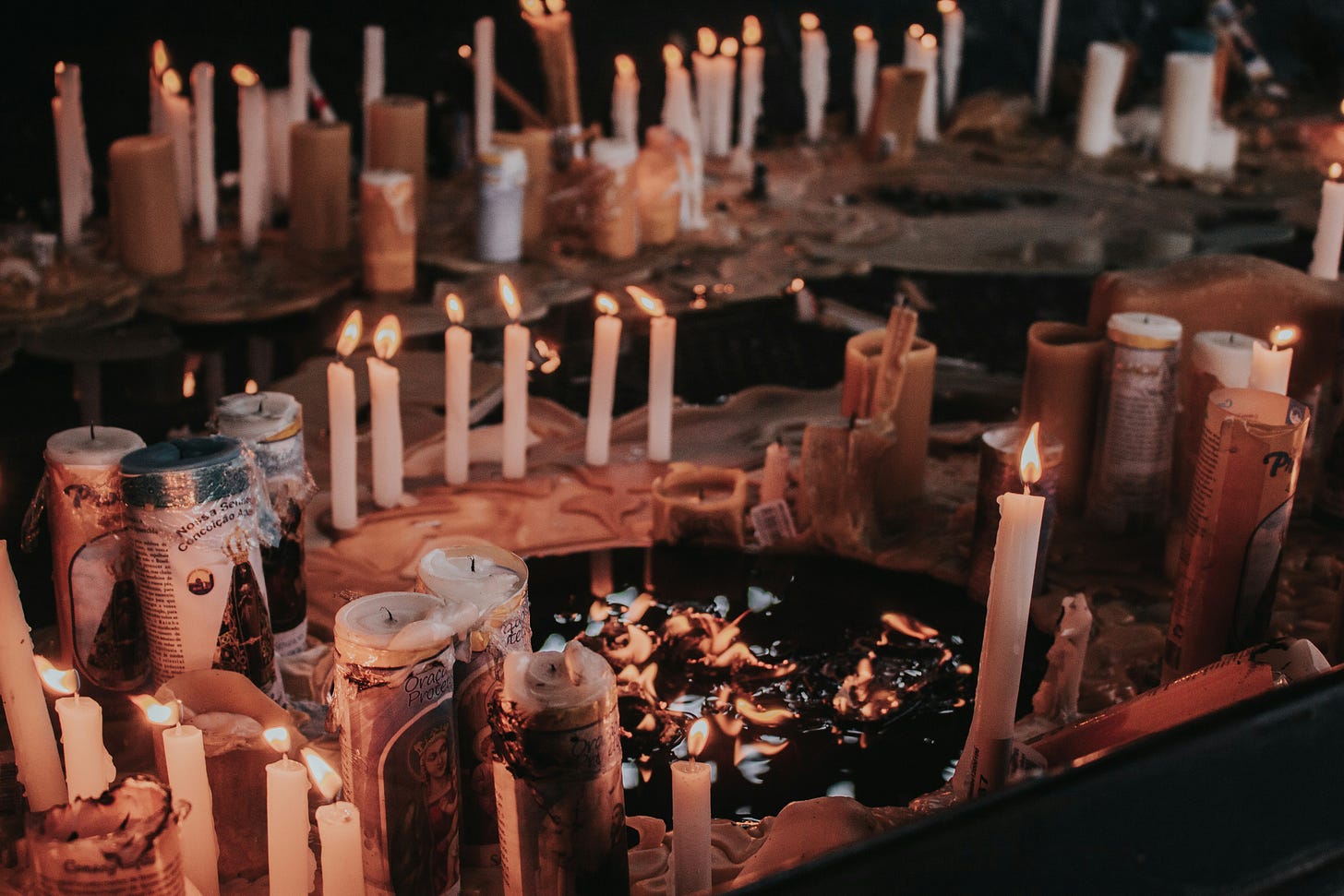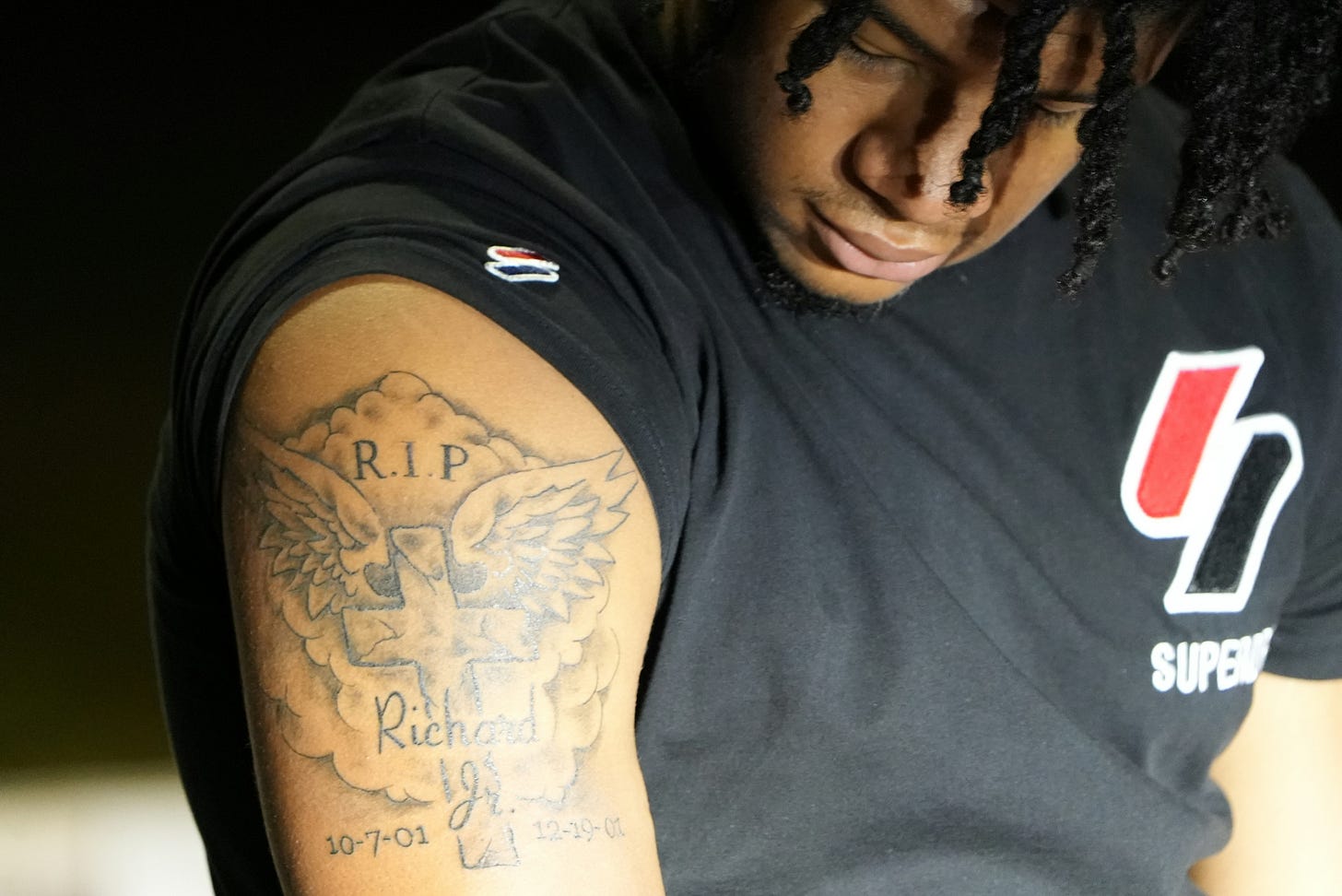When my clients and I consider specific grief rituals, we do this to help them process grief and honor loved ones. Sometimes this is before a death occurs, and other times long after.
We choose these rituals from different cultures, religions, and faith traditions.
This is part of why I travel worldwide and read countless books. I want to offer my clients something that feels right for them.
Each ritual holds profound meaning.
It also provides insight into the values and beliefs of each community. Rituals connect us across ethnic and cultural lines, no matter our backgrounds.
After all, everybody hurts.
"Please, please don't apologize. When grief shows up, give it the attention it needs. Grief will wait. I, myself, tried to work it away, tried to drink it away, exercise it away, sleep it away. It waited. Grief. Will. Wait. Grief will wait until you give it the attention and time it needs."
- Unknown
Types of Grief
Grief rituals help us work through emotional devastation, no matter what type of grief we feel. I see these grief experiences the most:
Anticipatory Grief - Distress felt in the days, months, and sometimes years before the death of a loved one or other impending loss.
Common Grief - This is the most familiar to people. Reactions such as numbness, shock, disbelief, and/or denial often occur immediately after a loss.
Disenfranchised Grief - When society says you shouldn't mourn.
Complicated Grief - An ongoing, heightened state of mourning that keeps you from healing.
“Although some people could call these superstitions, that’s both condescending and beside the point. Rituals are necessary for processing grief and acknowledging the death of a loved one.
They’re small actions, but they are also specific ways of feeling like we have some agency in the face of death, and with them, we have done something, even if only symbolically, to help the loved one leave our lives.
So these aren’t superstitions so much as rituals that involve us with the process of dying; they give us purpose in the moments after a death, at the very point when otherwise anyone might give in to despair. These are acts of devotion.”
- Richard Deming
Grief Rituals
In no particular order, here are the rituals that resonate the most with my clients.
Sitting Shiva
A Jewish seven-day mourning period where the immediate family stays at home and receives visitors, reciting prayers and reflecting on the deceased's life.
Celtic Wakes
An Irish or Scottish gathering of family and friends for storytelling, music, and celebration of the deceased's life, often with an open casket.
Memorial Tattoos
In various cultures, tattoos commemorate the deceased, often including their name, dates, and significant symbols. I’ve even had clients include cremated remains in their ink for such tattoos.
Mass and Rosary
My Catholic clients hold a mass and recite the rosary for the deceased, focusing on prayers for their soul's journey.
Family Time
After the death, families (and I use that term in the broad sense of the word, chosen or otherwise) gather to play their loved one’s favorite music, go through pictures or videos, and plan remembrance ceremonies.
Day of the Dead
Originally, a Mexican holiday where families create altars to honor their deceased loved ones. This often includes their favorite foods and mementos.
Tibetan Book of the Dead
This revered book describes, and is intended to guide one through, the experiences that the consciousness has after death, in the bardo. The bardo is the interval between death and the next rebirth.
The book includes chapters on the signs of death. It also discusses rituals to undertake when death is closing in or has taken place. The text is used as either an advanced practice for trained meditators or to support the uninitiated during the death experience.
Antyesti
A Hindu ritual that includes the cremation of the body and the scattering of the ashes in a sacred river, often the Ganges, symbolizing the soul's release.
Jazz Funeral
In New Orleans, a procession featuring a brass band plays somber music on the way to the cemetery and lively jazz on the return journey, celebrating the deceased's life.
Tear Bottles
Inspired by Ancient Rome and the Middle East, mourners collect tears in a bottle as a sign of respect for the deceased.
Kuhane Ritual
A Māorian ritual that resonates with my clients involves storytelling and song, where loved ones share memories and perform traditional dances to honor the deceased.
Crying Songs
A Siberian indigenous ritual, my clients use this tradition by singing special mourning songs to express their grief and help the souls of the deceased pass into the afterlife.
Obon
In Japanese communities, Buddhist families light lanterns to guide the spirits of their ancestors back to the family home, ending with a ritual dance and the floating of lanterns on the water.
Kaddish
A Jewish prayer is recited by mourners daily for seven days or sometimes eleven months, and on the anniversary of the death, to honor the deceased and affirm their faith.
Ancestral Worship
My Asian clients make regular offerings of food, incense, and paper money to both honor and support the spirits of their ancestors.
Totem Poles
Indigenous Peoples of the Pacific Northwest, USA/Canada, erect carved poles to honor the deceased and their family lineage.
Islamic Funeral
A swift Muslim burial, usually within 24 hours, includes reciting prayers and wrapping the body in a simple white shroud, reflecting humility and equality before God.
Bansang
A traditional Korean funeral table set with food offerings for the deceased reflects respect and provides sustenance for their spirit.
Wailing
Clients from various African tribes and cultures express grief through loud crying, singing, and sometimes physical expressions of sorrow, believed to help release the soul.
I even have a few Irish relatives who also do this; we call it keening.
Tihar
A Nepalese festival in many cities around the world, including Chicago, that includes honoring the dead by lighting oil lamps and offering prayers, often involving the entire community.
Requiem
Various Christian denominations involve a mass or service featuring special music and prayers for the repose of the deceased's soul.
Death Masks
Egyptian clients create masks to cover the faces of the deceased, believing this ritual protects their loved one’s soul and helps in their journey to the afterlife.
My clients also find solace in simple rituals like candlelighting ceremonies, memorial services, living funerals, traditional burials, and the scattering of cremains. We routinely gather to create legacy projects such as recipe books or ethical wills.
Other times, we involve the community, like an action day for a local charity in the name of the person who has died.
Why Are Rituals Important?
Rituals offer a sense of order during a time of emotional chaos. They also create a structured environment where mourners engage in comforting, familiar activities. In the face of the uncontrollable nature of death, they give mourners specific actions to perform, grounding them.
Through practices such as crying, storytelling, or singing, individuals release their feelings in a communal setting. This collective experience helps individuals feel less isolated in their grief.
This can be a vital step in preserving a loved one’s memory and ensuring their legacy lives on. We include things that symbolize the continued presence of the deceased, helping mourners maintain a connection to them.
What Rituals Work For You?
Engaging in rituals helps individuals work their way through the mourning process. Cultural, religious, or spiritual beliefs offer a framework for understanding death and the afterlife.
Please add your ideas for grief rituals in the comments below. I welcome more suggestions that may help future clients in need.







